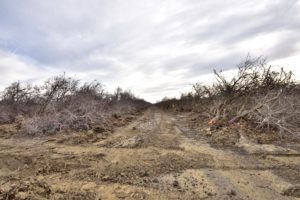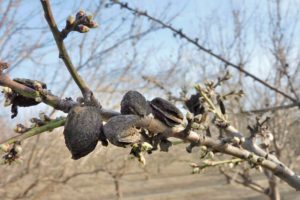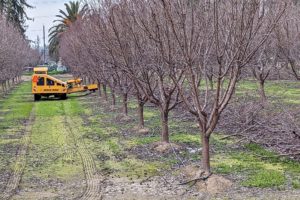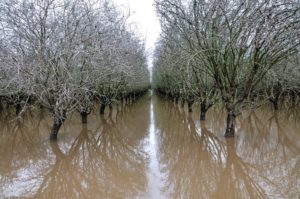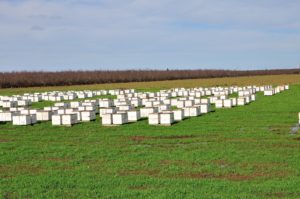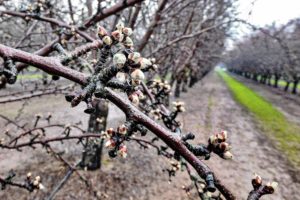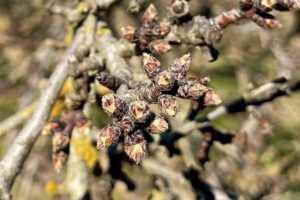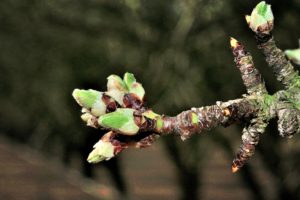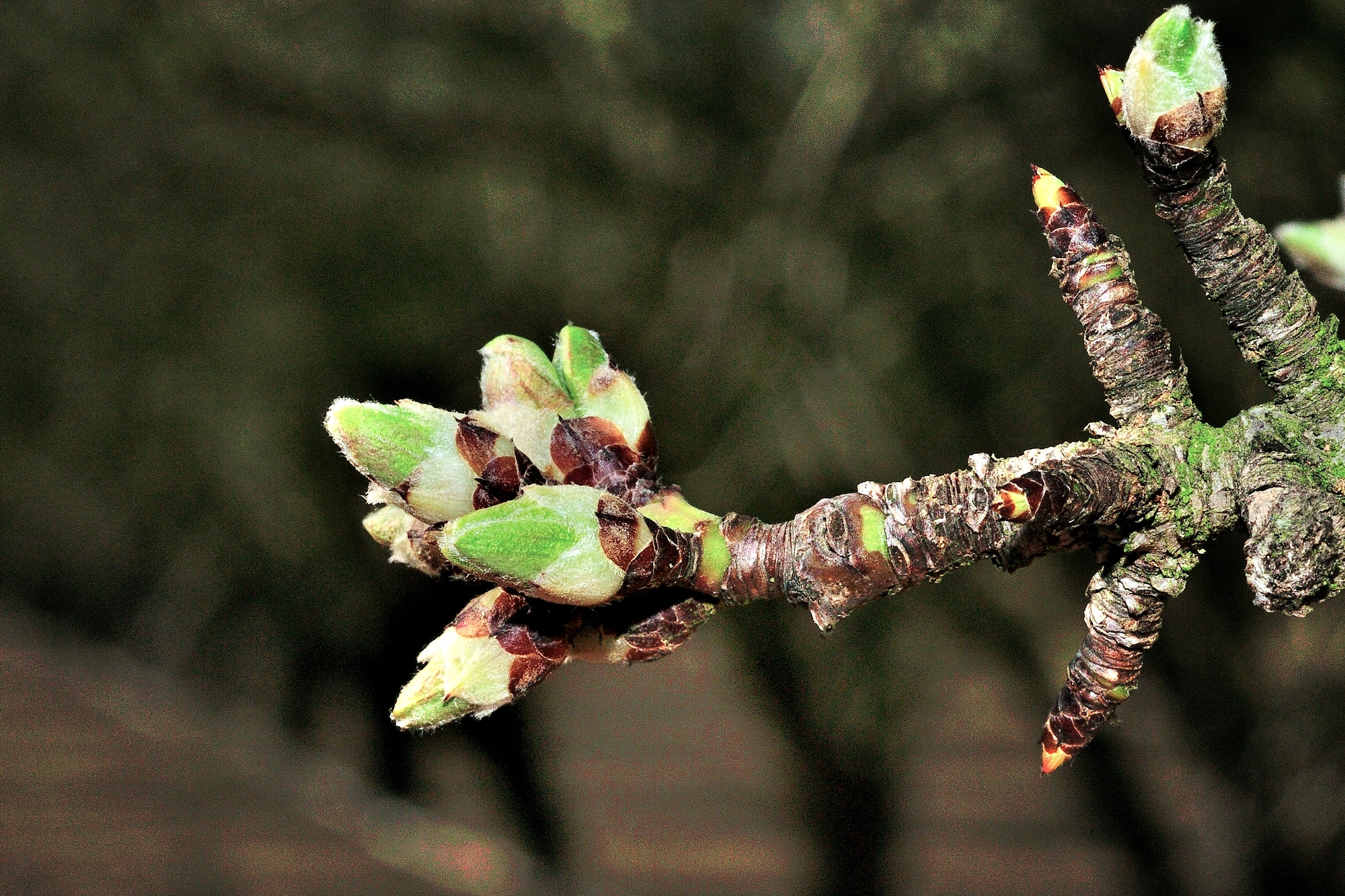
This report covers the conditions and activities observed prior to the start of the 2023 bloom. We anticipate starting regular weekly bloom reports during the week of February 12, 2023.
The winter of 2022/23 brought the somewhat unexpected return of wet weather to California’s Central Valley. Official sources had documented the presence of “La Nina” conditions and had therefore forecast a comparatively dry winter. However, “Mother Nature” had different ideas, and the now well documented series of nine “atmospheric river” storm events between the final week of December, and the third week of January delivered much-needed rainfall to the valley, as well as snow to the Sierra Nevada watershed.
As is normally the case, greatest amounts of rain were recorded in the north state, where from 8 to 13 inches were reported in the Sacramento Valley. Areas of the northern and southern San Joaquin Valley also received record rain and snow. Official stations reported 6 to 11 inches of rain from San Joaquin to Merced counties and 3 to 7 inches from Madera, south to Kern County. More importantly, the Sierra Nevada snowpack has reached record levels and reservoir storage has increased significantly, giving hope for adequate water supplies needed for the 2023 growing season. As this report is being prepared, snowpack in the northern, central, and southern Sierra Nevada is reported at 167%, 205% and 242% of normal for the date and 106%, 132% and 153% of the April 1 average. Reservoir levels have risen dramatically with the majority of reservoirs critical to meeting irrigation needs are running above normal levels for the date.
The record-breaking rainfall has also created significant problems. Areas of Merced County, near Planada and southwest of Merced, along with areas of Stanislaus and San Joaquin counties flooded as creeks broke through their banks or overflowed onto adjoining lands. Orchard soils in all areas of the Central Valley became saturated during the storms, eliminating the ability to bring equipment into the orchards. As February began, growers in areas with more well drained sandy soils are just now able to return to their orchards while others wait for the water to drain away. However, additional precipitation from passing storm systems has complicated matters for all. Growers are becoming increasingly concerned about the possibility of root diseases such as phytophthora, which are promoted by the saturated soils.
Observers are reporting that bud development is progressing well with all varieties appearing to be well synchronized, indicating the potential for good bloom overlap between varieties. The nature of the atmospheric river storms, approaching from the west, rather than the colder Gulf of Alaska held temperatures to above normal levels, pushing bud development. However, colder conditions with morning low temperatures dropping into the upper 20’s between storm events over the past few weeks have slowed things down a bit, and we are expecting the first significant amount of viable bloom to appear in 7 to 10 days.
Up until the arrival of the storms, growers spent their time focusing on normal dormant season tasks, while also keeping a close eye to minimizing costs. Many have eliminated pruning this year, saving on labor and the cost of shredding the resulting brush. Weed control practices can be modified slightly, but ultimately, the vegetation must be controlled. Orchard sanitation, the practice of shaking “mummy” nuts that failed to drop from the trees during the harvest, then sweeping and mowing them to destroy over-wintering Navel Orange Worm, NOW, was severely impacted by the storms. As a result, observers are reporting that many orchards are displaying a significant number of mummies, foretelling increased pressure from NOW in the coming harvest.
Observers are also reporting a significant number of orchard removals in all areas. Growers are pulling older, low producing plantings and ironically, orchards in areas with questionable water supplies. Even these activities have been impacted by the storms and toppled trees may be observed in all areas waiting for the ground to dry enough to support machinery needed to grind the trees and spread them grindings over the land.
Beekeepers have been bringing hives into the valley since November, staging the colonies in “bee yards” where they can be cared for and fed prior to delivery to the orchards. Now, with the bloom approaching, trucks and forklifts may be observed throughout the night, dropping pallets of hives along the perimeter of the orchards. Growers typically use two hives per acre, each with eight frames of bees and brood. Observers are reporting that some growers have said they intend to reduce the number of hives used this year to reduce costs. Reducing the number of hives per acre is a viable practice, assuming that the hives contain a greater number of frames and are therefore “stronger”. However, simply using fewer hives may adversely impact yield if we experience inclement weather during the bloom. As the hives are delivered, the bees will forage on any flowering plants within or near the orchards until the bloom begins. Growers with cover crops planted within the orchards have noted that the flowering species within the seed mixes they used are just beginning to bloom, having been held back slightly by the cooler temperatures following the storms.
All will be monitoring the weather forecasts over the coming weeks, hoping to avoid the freezing temperatures that severely impacted the 2022 crop for many growers.
Mel Machado
Vice President, Member Relations
Photos by: Ben Goudie, Christine Ivory, KC Clendenin, Justin Elam, Kenny Miyamoto, and Mel Machado.

